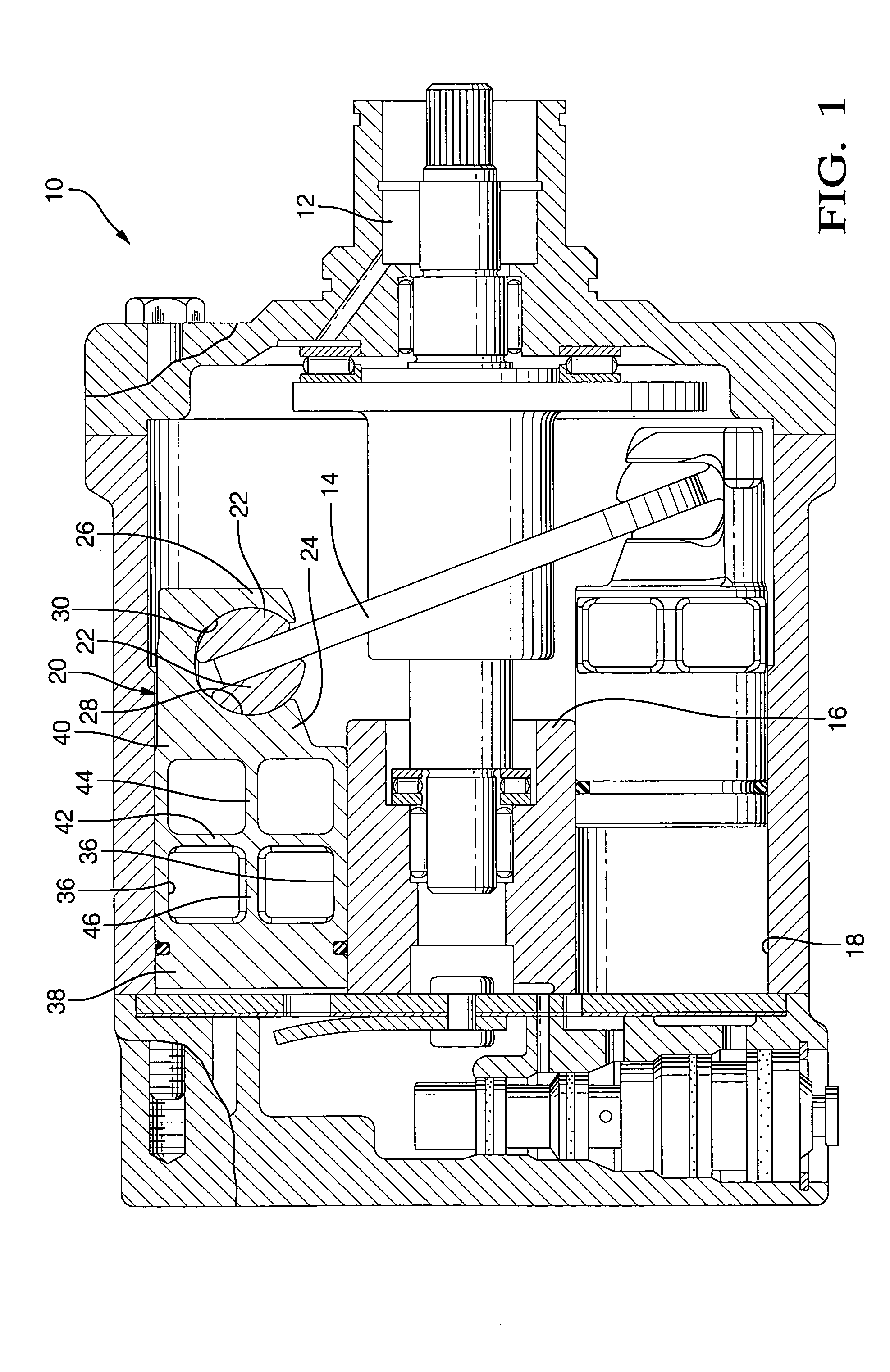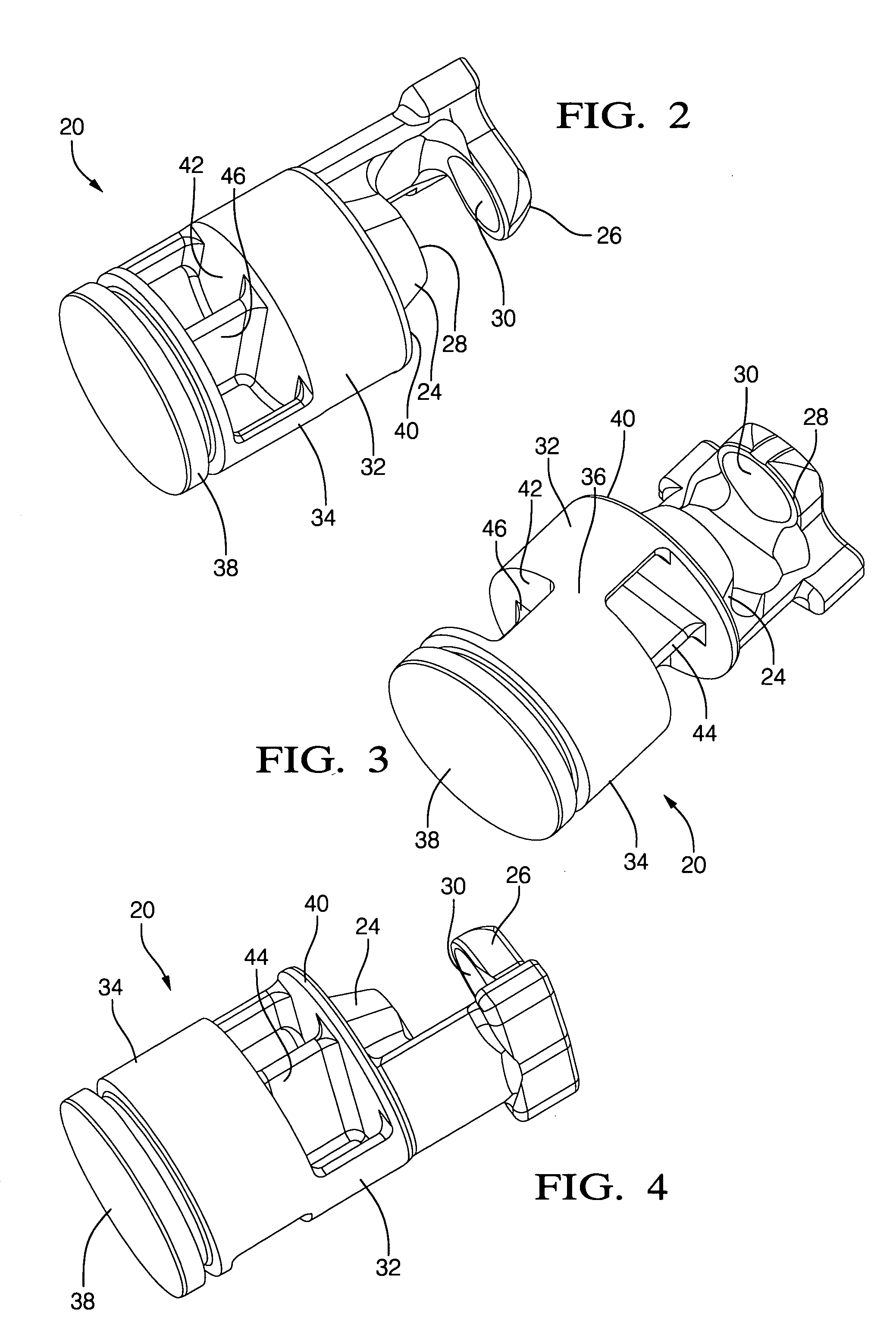Unitary hollowed piston with improved structural strength
- Summary
- Abstract
- Description
- Claims
- Application Information
AI Technical Summary
Benefits of technology
Problems solved by technology
Method used
Image
Examples
Embodiment Construction
[0021] Referring first to FIG. 1, a compressor 10 has a central driven shaft 12, which rotates a nutating swash or wobble plate 14 within a cast cylinder block 16. Defined within cylinder block 16 are an array of cylinder bores 18, generally 5 to 7 in number. If, for convenience, the piston reference frame described above is oriented with each central plane P including the axis of shaft 12, the in surface of the bore 18 may be considered to have its surface area divided up into corresponding quadrants. A piston, designated generally at 20, is reciprocated axially within each bore 18 by a pair of half ball shoes 22, as the plate 14 slides between the flat sides of the shoes 22. At the rear of each piston 20, a pair of parallel stanchions 24 and 26 contain machined ball sockets 28 and 30, within which the spherical sides of the shoes 22 twist as the plate 14 nutates back and forth on shaft 12. The stanchions 24, 26 and sockets 28, 30 are a standard feature of swash plate driven piston...
PUM
 Login to view more
Login to view more Abstract
Description
Claims
Application Information
 Login to view more
Login to view more - R&D Engineer
- R&D Manager
- IP Professional
- Industry Leading Data Capabilities
- Powerful AI technology
- Patent DNA Extraction
Browse by: Latest US Patents, China's latest patents, Technical Efficacy Thesaurus, Application Domain, Technology Topic.
© 2024 PatSnap. All rights reserved.Legal|Privacy policy|Modern Slavery Act Transparency Statement|Sitemap



